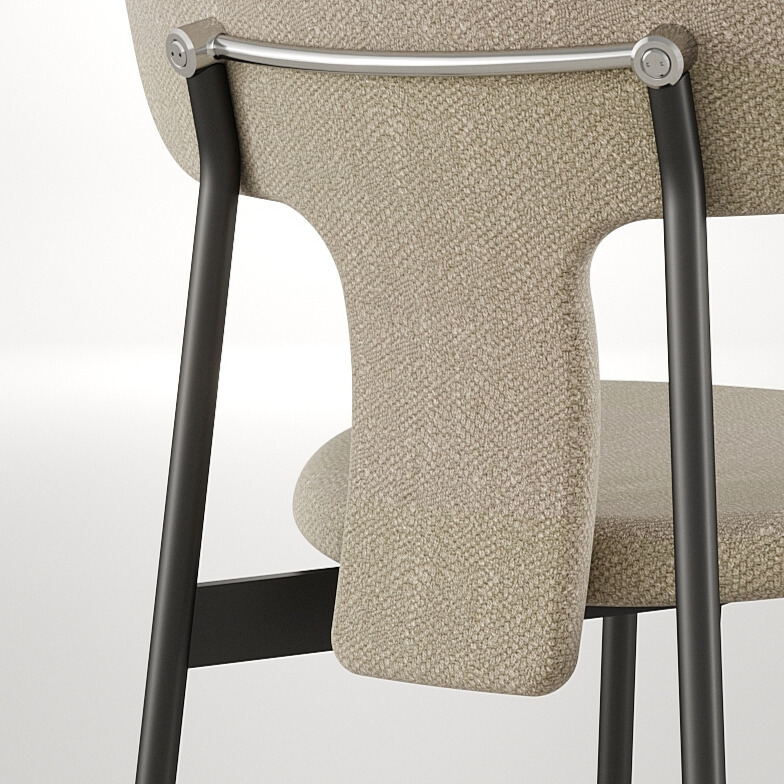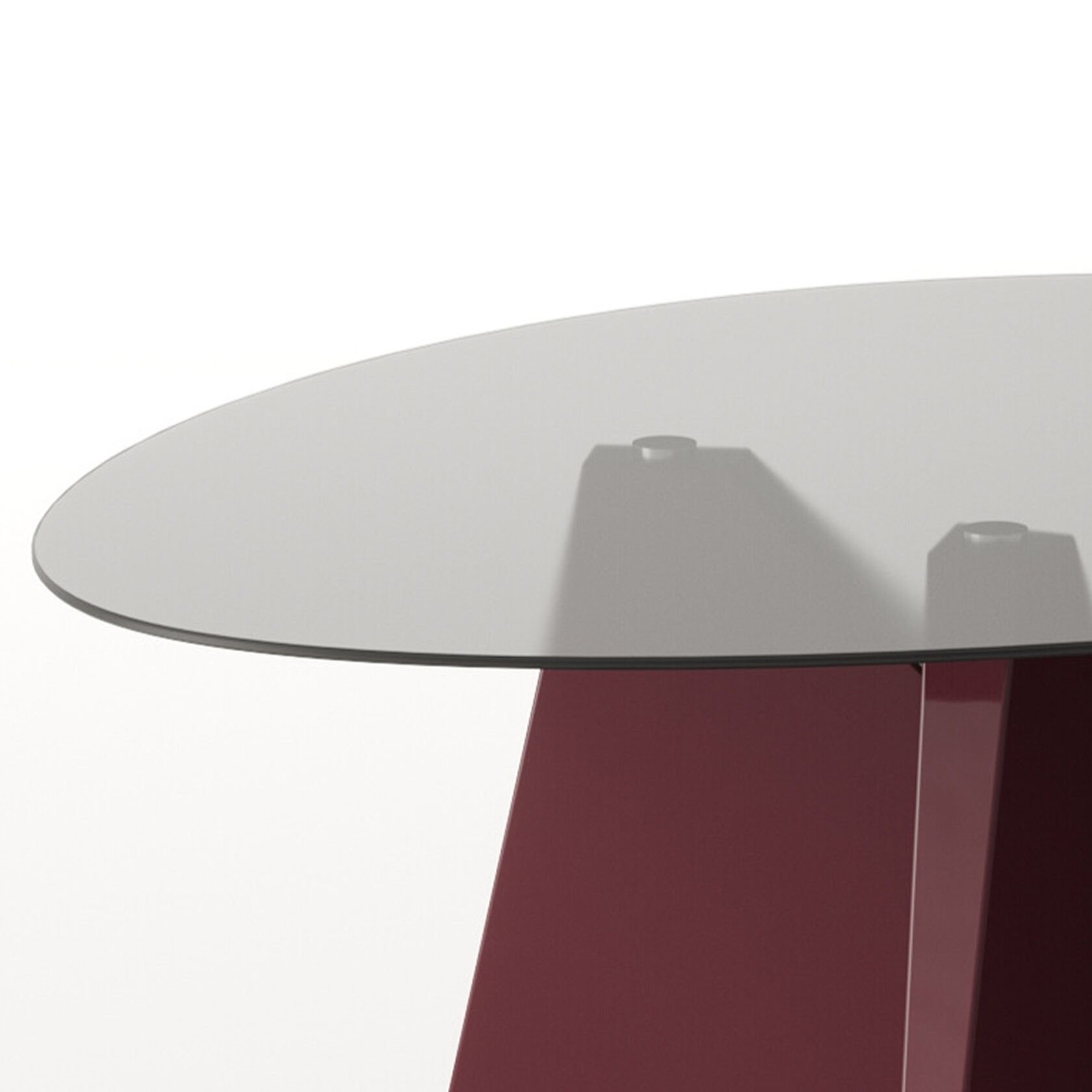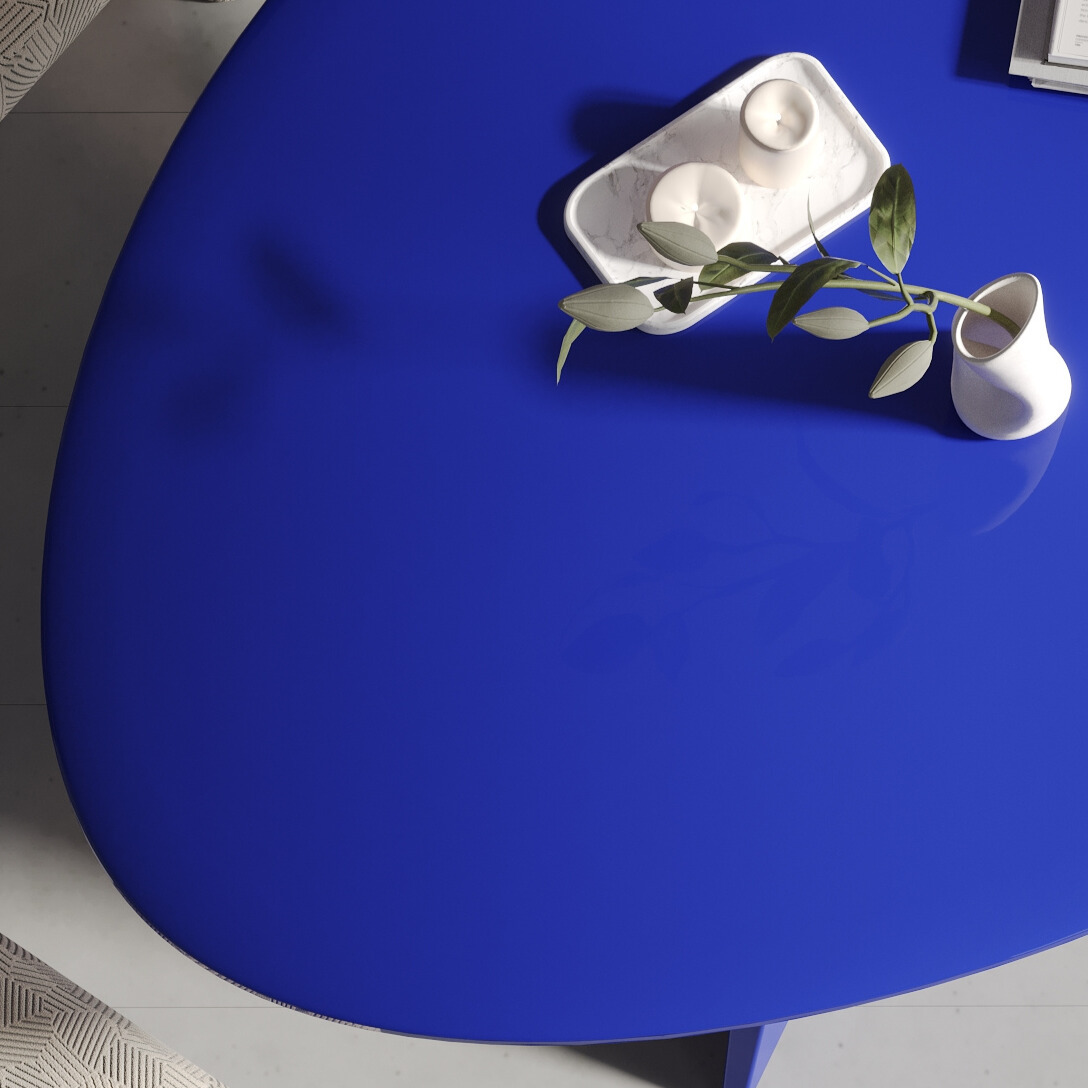care instructions
Proper care helps preserve the beauty and integrity of your design furniture over time. These instructions will guide you in keeping each piece in its best condition for years to come.
GENERAL CARE:
• Keep powder-coated steel out of prolonged direct sunlight to minimize color fading and surface deterioration caused by UV exposure.
• Avoid exposing the surface to temperatures above 50 °C, as excessive heat may damage the coating and lead to corrosion.
• To prevent scratches, always use coasters, trays, or protective pads — especially with sharp or abrasive objects. Any break in the painted or varnished finish can expose the metal and trigger oxidation.
• Keep powder-coated steel out of prolonged direct sunlight to minimize color fading and surface deterioration caused by UV exposure.
• Avoid exposing the surface to temperatures above 50 °C, as excessive heat may damage the coating and lead to corrosion.
• To prevent scratches, always use coasters, trays, or protective pads — especially with sharp or abrasive objects. Any break in the painted or varnished finish can expose the metal and trigger oxidation.
CLEANING TIPS:
• Dust regularly with a soft, dry cloth to maintain a clean, even surface.
• For more thorough cleaning, gently wipe with a damp cloth using pH-neutral soap or a cleaner made for steel surfaces. Always test any new product on a small area first.
• Avoid abrasive sponges, harsh detergents, or scouring agents, as these can dull or damage the finish.
• Never use cleaners that contain chlorine, as they may cause corrosion.
• Clean off fingerprints, spills, and stains as soon as possible using a damp, non-abrasive cloth, then dry immediately to avoid water marks.
• Dust regularly with a soft, dry cloth to maintain a clean, even surface.
• For more thorough cleaning, gently wipe with a damp cloth using pH-neutral soap or a cleaner made for steel surfaces. Always test any new product on a small area first.
• Avoid abrasive sponges, harsh detergents, or scouring agents, as these can dull or damage the finish.
• Never use cleaners that contain chlorine, as they may cause corrosion.
• Clean off fingerprints, spills, and stains as soon as possible using a damp, non-abrasive cloth, then dry immediately to avoid water marks.

GENERAL CARE:
• Handle with care to avoid chipping the edges or corners - these are the most fragile areas of any glass surface.
• Avoid placing extremely hot or cold objects directly on the tabletop; always use trivets or coasters to protect the glass from thermal shock.
• Although toughened, glass can still scratch - use placemats or soft pads to prevent abrasion from rough or sharp items.
• Do not stand or sit on the glass surface, even if it feels sturdy.
• Handle with care to avoid chipping the edges or corners - these are the most fragile areas of any glass surface.
• Avoid placing extremely hot or cold objects directly on the tabletop; always use trivets or coasters to protect the glass from thermal shock.
• Although toughened, glass can still scratch - use placemats or soft pads to prevent abrasion from rough or sharp items.
• Do not stand or sit on the glass surface, even if it feels sturdy.
CLEANING TIPS:
• Clean regularly with a soft microfiber cloth to remove dust and fingerprints.
• For deeper cleaning, use a standard glass cleaner or a mix of water and mild soap. Spray lightly and wipe gently in circular motions.
• Avoid ammonia-based products on painted or frosted finishes - they may damage the surface.
• Dry the surface with a clean, dry cloth to avoid streaks or water marks.
• For stubborn marks, a small amount of white vinegar diluted in water can be used safely — always test in an inconspicuous spot first.
• Clean regularly with a soft microfiber cloth to remove dust and fingerprints.
• For deeper cleaning, use a standard glass cleaner or a mix of water and mild soap. Spray lightly and wipe gently in circular motions.
• Avoid ammonia-based products on painted or frosted finishes - they may damage the surface.
• Dry the surface with a clean, dry cloth to avoid streaks or water marks.
• For stubborn marks, a small amount of white vinegar diluted in water can be used safely — always test in an inconspicuous spot first.

GENERAL CARE:
• Avoid prolonged exposure to direct sunlight, as it can cause discoloration or fading of both wood and lacquered surfaces.
• Protect from moisture — always use coasters and placemats to avoid rings, stains, or swelling caused by liquids.
• Prevent scratches by avoiding contact with sharp or rough objects. For lacquered surfaces (both matte and high-gloss), even fine dust can leave micro-scratches if wiped without care.
• Keep away from extreme temperatures or abrupt changes in humidity, which can cause warping or cracks over time.
• Avoid prolonged exposure to direct sunlight, as it can cause discoloration or fading of both wood and lacquered surfaces.
• Protect from moisture — always use coasters and placemats to avoid rings, stains, or swelling caused by liquids.
• Prevent scratches by avoiding contact with sharp or rough objects. For lacquered surfaces (both matte and high-gloss), even fine dust can leave micro-scratches if wiped without care.
• Keep away from extreme temperatures or abrupt changes in humidity, which can cause warping or cracks over time.
CLEANING TIPS:
• Dust regularly using a clean, soft, and dry microfiber cloth.
• For light cleaning, use a slightly damp cloth followed by a dry one to remove any residue.
• Avoid aggressive chemicals, alcohol-based cleaners, or abrasive cloths/sponges — they can damage the finish, especially on high-gloss lacquer.
• In case of spills, wipe immediately with a soft dry cloth to prevent staining or surface damage.
• Never use wax, oil, or silicone-based products, as they can alter the sheen or leave a residue.
• Dust regularly using a clean, soft, and dry microfiber cloth.
• For light cleaning, use a slightly damp cloth followed by a dry one to remove any residue.
• Avoid aggressive chemicals, alcohol-based cleaners, or abrasive cloths/sponges — they can damage the finish, especially on high-gloss lacquer.
• In case of spills, wipe immediately with a soft dry cloth to prevent staining or surface damage.
• Never use wax, oil, or silicone-based products, as they can alter the sheen or leave a residue.

GENERAL CARE:
• Keep upholstered furniture at a safe distance (at least 25−30 cm) from heat sources like radiators and heaters to prevent fabric deterioration and color fading.
• Protect from direct sunlight, as prolonged UV exposure can cause discoloration over time.
• Dust and vacuum regularly — use a soft upholstery brush or a vacuum with a fabric-safe nozzle. For best results, vacuum every two weeks.
• Fluff and reshape seat and back cushions periodically to maintain volume and appearance, especially after transport or extended use.
• Avoid strong chemical cleaners: do not use bleach, degreasers, or alcohol-based detergents, as they may damage fibers or fade colors.
• Prevent damage from pets — claws and fur can scratch or snag delicate upholstery fabrics.
• Be mindful of liquids such as coffee, wine, and oil, which can cause difficult-to-remove stains.
• Keep upholstered furniture at a safe distance (at least 25−30 cm) from heat sources like radiators and heaters to prevent fabric deterioration and color fading.
• Protect from direct sunlight, as prolonged UV exposure can cause discoloration over time.
• Dust and vacuum regularly — use a soft upholstery brush or a vacuum with a fabric-safe nozzle. For best results, vacuum every two weeks.
• Fluff and reshape seat and back cushions periodically to maintain volume and appearance, especially after transport or extended use.
• Avoid strong chemical cleaners: do not use bleach, degreasers, or alcohol-based detergents, as they may damage fibers or fade colors.
• Prevent damage from pets — claws and fur can scratch or snag delicate upholstery fabrics.
• Be mindful of liquids such as coffee, wine, and oil, which can cause difficult-to-remove stains.
CLEANING TIPS:
• For day-to-day maintenance, remove surface dust with a soft brush or feather duster.
• For small stains, gently blot (don't rub) using a dry sponge or absorbent cloth.
• In case of spills, absorb excess liquid immediately using blotting paper, then clean the area with a damp sponge and a mild soap solution — always working from the outer edge inward. Dry with a soft cloth.
• Always test any new cleaning product on a fabric swatch or an inconspicuous area before full application to ensure safety.
• For day-to-day maintenance, remove surface dust with a soft brush or feather duster.
• For small stains, gently blot (don't rub) using a dry sponge or absorbent cloth.
• In case of spills, absorb excess liquid immediately using blotting paper, then clean the area with a damp sponge and a mild soap solution — always working from the outer edge inward. Dry with a soft cloth.
• Always test any new cleaning product on a fabric swatch or an inconspicuous area before full application to ensure safety.

